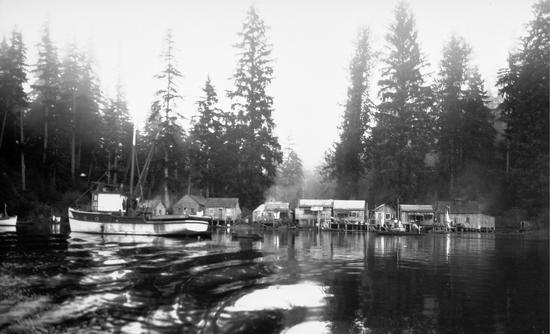- Home
- Contents
- Maps
- Concerning Place Names
- Introduction
- Chapter 1: The Lay of the Land
- Chapter 2: The People of the Sound
- Chapter 3: The King George Men
- Chapter 4: The Boston Men
- Chapter 5: “Outrages and Disorders”
- Chapter 6: Enter the Missionaries
- Chapter 7: The Sealing Years
- Chapter 8: Setting up Shop
- Chapter 9: “Alive with Fish”
- Chapter 10: “Teeming with Riches”
- Chapter 11: The Hopeful Coast
- Chapter 12: Disconnection
- Chapter 13: Separation
- Chapter 14: Community
- Chapter 15: The Japanese
- Chapter 16: Boat Days
- Chapter 17: Wartime
- Chapter 18: Peacetime
- Chapter 19: Lovely Road
- Chapter 20: Adjustment
- Chapter 21: The War in the Woods
- Chapter 22: The Emerging Scene
- Timeline
- Acknowledgements
- Selected Sources
- About the Authors
Concerning Place Names
Many places mentioned in this book are known by, or have been known by, more than one name. A selective list of these follows. The official names, listed on the left, are taken from current marine charts, or the Gazetteer of British Columbia.
* Name still in use on 1921 census.
We use the spellings “Hesquiaht,” “Ahousaht” and “Opitsaht” for the First Nations villages in Clayoquot Sound. When citing other sources, we replicate the spellings found in those sources.
We do not attempt to provide all of the names traditionally used by First Nations, nor all the names used by the Japanese who lived on the coast prior to World War II.
Place names around the world reflect choices made in previous generations, often for political reasons. Official West Coast place names repeatedly honour explorers, traders, naval vessels, missionaries, and settlers. Writing for the Daily Victoria Gazette in 1858, William Banfield questioned the names colonial authorities were giving to places on Vancouver Island’s west coast. “Good taste would lead us at the present day to adopt the Indian names,” he wrote, “in most instances…much prettier, many of them having a natural beauty of sound…Great Britain’s Colonies have enough Royal names, noble names, and titles of our grandfathers and grandmothers.” His comments went unheeded. But as time passes, place names in Clayoquot Sound, and all over British Columbia, remain subject to change. In a hundred years, a list of place names in this area could look very different.

